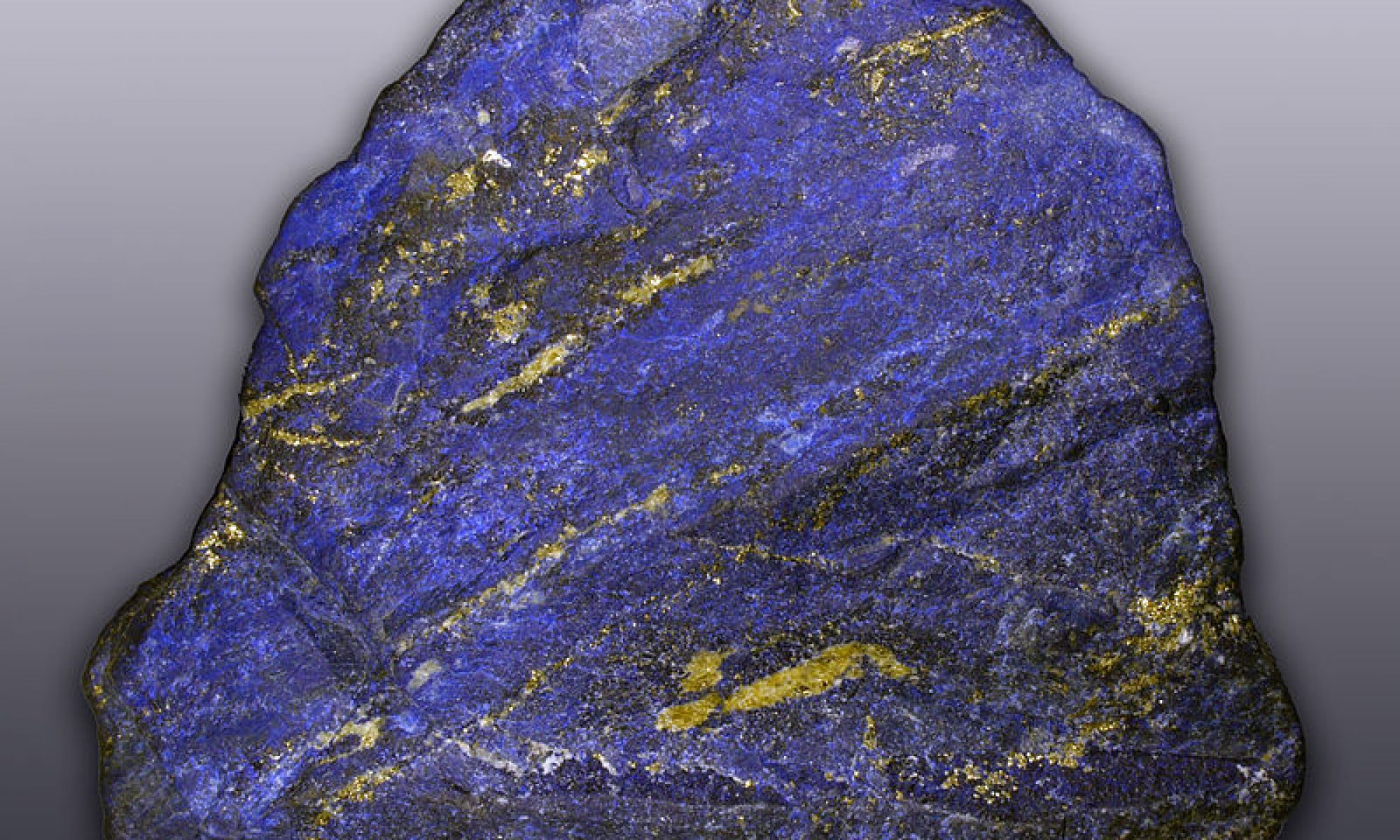Lapis Lazuli is one of the most popular stones in the world, and has been for a lot longer than you’d think. It’s been mined in Badakhshan, in North Eastern Afghanistan for as long as nine thousand years, and has been traded extensively for almost as long. It’s not a mineral, but a metamorphic rock, formed by the heating and twisting of rocks at depth within the Earth’s crust. It’s comprised of a few minerals, but mainly lazurite and sodalite, which provide the color, with white streaks of calcite and brassy gold spots of pyrite. While it can be found elsewhere – Chile and Russia have some resources – the Afghan sites are by far the richest, and have provided the world with lapis since it was first discovered. The gradual spread of the stone around the globe via trade routes is remarkable.
The prized stone made its way East and South via trade routes into the Indus Valley, where it was made into crude beads and jewelry. Later, it found its way West, where the Mesopotamians used it as a decorative stone, and the Sumerians set it in daggers and cups. The Egyptians went crazy for it, too, using it for seals, sculpting, make up, jewelry and for throwing at slaves. Tutankhamun’s death mask contains pieces of Afghan lapis. The Greeks and Romans were also big fans, thinking it a powerful aphrodisiac, and in the Middle Ages it began to move North into the rest of Europe, where painters got excited about it.
Before people knew about chemistry and factories, when paint used to be made by crushing up beetles, stones, leaves and hippo dung, the most expensive color was always blue. Ultramarine – the beautiful blue pigment made from lapis – was so precious it always saved for the most important bits of paintings, which is at least partly why the Virgin Mary tends to be pictured in a blue dress. Michelangelo used it in the ceiling of the Sistine Chapel. A synthetic version of ultramarine has been used for a couple of centuries now, so most lapis remains uncrushed these days.
It’s mentioned a number of times in the Old Testament, though at that time (and in older translations) it was called sapphires, before the blue gem corundum stole that name for itself. The origins of the ‘new’, memorable, alliterative name doesn’t add to the poetry of its story, unfortunately. Lapis comes from the Latin for ‘stone’ and lazuli is derived from the Arabic word for blue, heaven or sky, ‘lazaward’. Blue stone. Genius. Lapis is supposed to promote self-awareness and reveal inner truth. The inner truth is that it doesn’t. What it DOES do, however, is look beautiful. And sometimes that’s enough.

